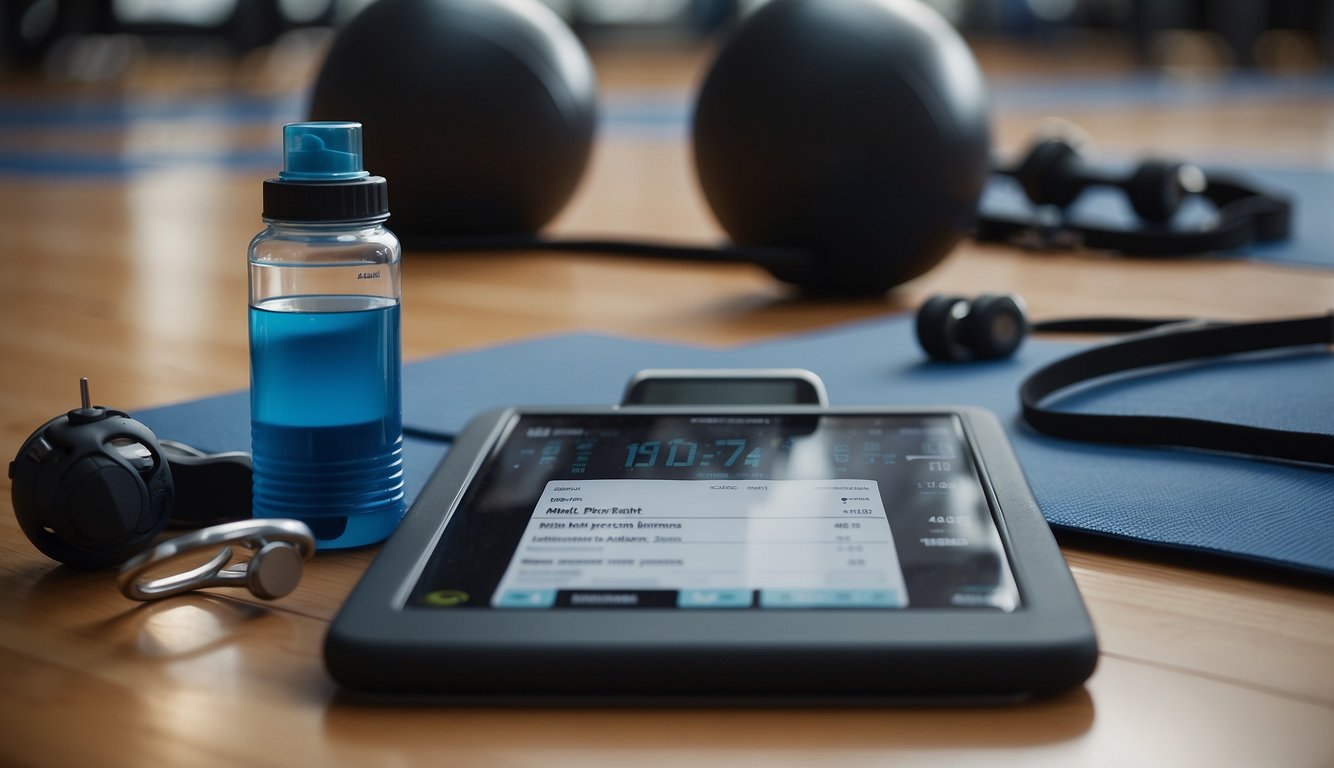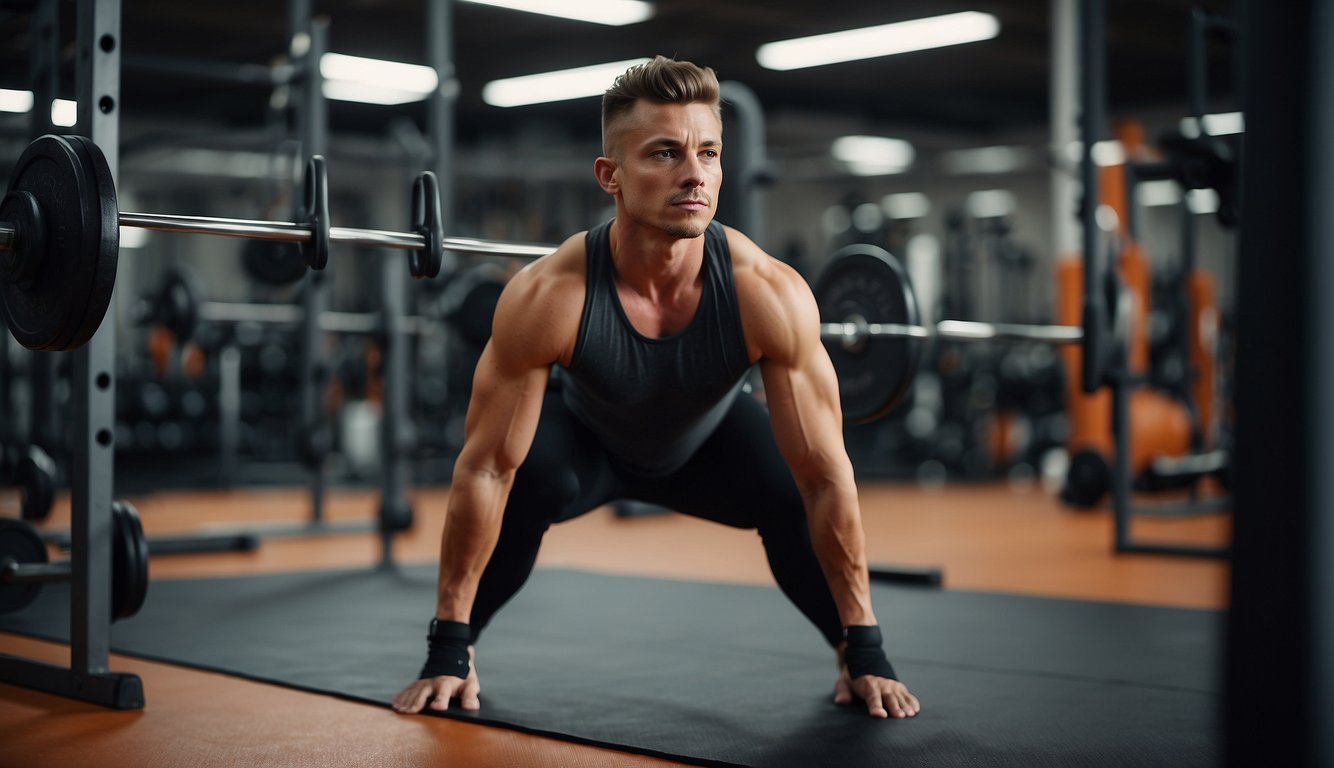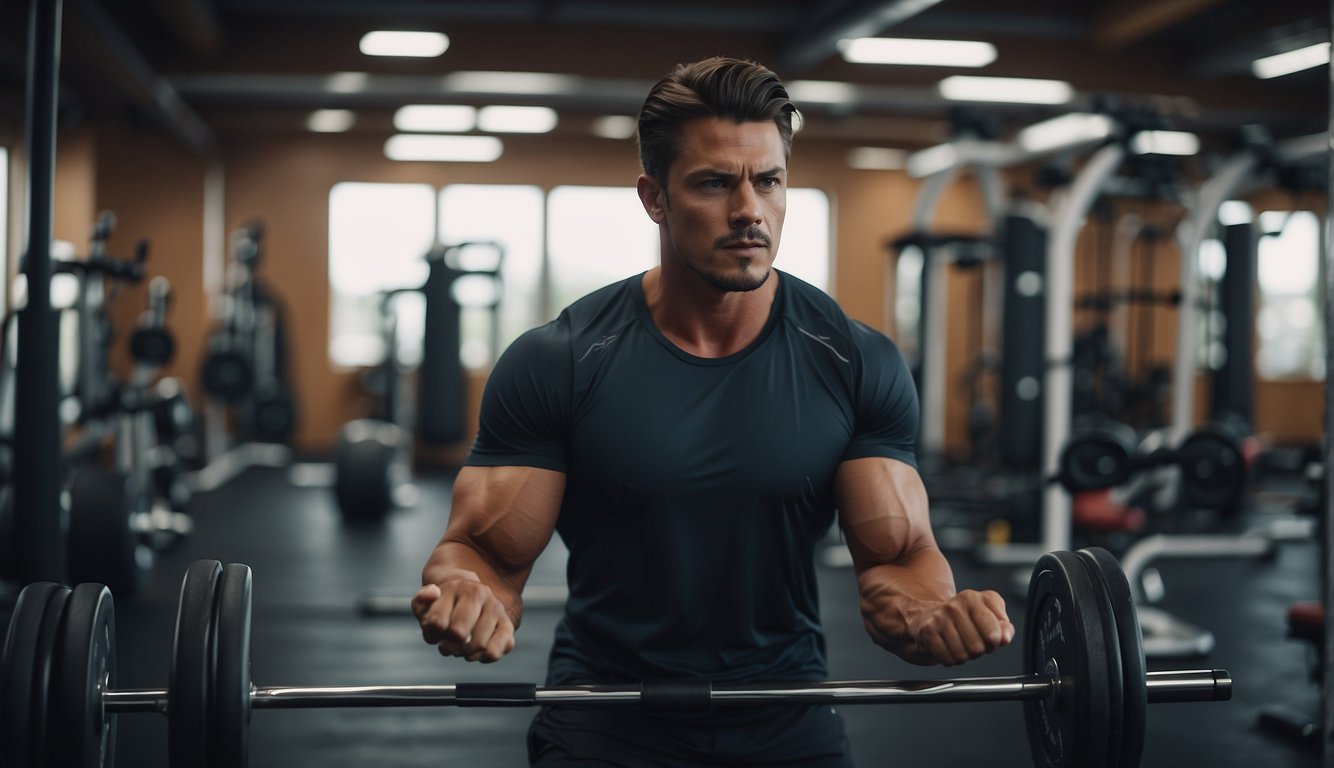How to Improve Conditioning: Conditioning is an essential component of fitness, involving the development of your body’s ability to perform and endure during physical activity. It’s a comprehensive approach that enhances overall health and athletic performance. Good conditioning doesn’t just happen; it requires consistent and purposeful effort. By participating in a structured conditioning program, you can improve your stamina, speed, strength, and recovery times, making you more efficient in all your physical endeavors.

To achieve optimal conditioning, it is crucial to understand how different exercises and routines impact your body. Tailoring a program to your individual needs and goals is key. By incorporating a variety of workouts that target different aspects of conditioning, you can create a balanced and effective regimen. Whether you’re looking to elevate your performance in a specific sport or to simply elevate your general health, knowing the right techniques and maintaining a disciplined practice are vital. Coupled with a proper diet and enough rest, the pursuit of improved conditioning can lead to significant health benefits and a higher level of fitness.
Key Takeaways
- Developing effective conditioning involves structured effort and varied exercises.
- Personalized fitness programs enhance stamina, strength, and performance.
- Balanced conditioning requires appropriate techniques, nutrition, and recovery.
Understanding Conditioning

Conditioning is an essential aspect of fitness that touches upon your strength, endurance, and overall cardiovascular health. It involves specific training methods that enhance your body’s energy systems to perform better and more efficiently.
Principles of Conditioning
Conditioning is founded on the application of stress to your body, followed by adequate recovery. The principle of progressive overload is vital; by gradually increasing the intensity of your workouts, you stimulate adaptations in your muscle fibers and cardiovascular system. This improvement, over time, leads to enhancements in your body’s aerobic (with oxygen) and anaerobic (without oxygen) capacities, directly influencing your endurance and power.
Types of Conditioning
There are primarily two types of conditioning—aerobic and anaerobic. Aerobic conditioning improves your body’s ability to utilize oxygen efficiently, directly supporting activities like long-distance running or swimming. This type of training often keeps your heart rate in a targeted range to fortify your cardiovascular health. On the other hand, anaerobic conditioning focuses on generating power in quick, intense bursts of movement, such as sprinting or heavy lifting, and is less reliant on oxygen.
Role of Energy Systems
Your body relies on various energy systems to fuel your activities, whether it’s a sprint or a marathon. These systems—phosphagen, glycolytic, and oxidative—are tapped depending on the intensity and duration of your exercise. Brief, high-intensity activities primarily use the phosphagen system, while the glycolytic system kicks in during slightly longer, still intense activities. For extended, lower-intensity efforts, your body utilizes the oxidative (aerobic) system. Conditioning workouts are designed to enhance the efficiency of these systems, to improve your energy production and delay fatigue.
Developing a Conditioning Program

Before embarking on a new conditioning journey, it’s vital to have a well-structured program. A comprehensive approach includes assessing your current fitness level, setting personalized goals, and designing a schedule that effectively blends strength training and cardio exercises.
Assessment of Current Fitness Level
To tailor your conditioning program to your needs, you must first evaluate your current fitness level. This evaluation can include cardiovascular tests like a 12-minute run or a heart rate recovery test, along with strength assessments such as max repetition push-ups or pull-ups. Understanding your starting point allows for the customization of your training intensity and volume.
Setting Goals and Objectives
Determine specific goals and objectives to keep your training focused and measurable. Goals may vary from increasing your muscular endurance to improving your overall cardiovascular health. Remember to set realistic milestones and have a clear vision of what you wish to achieve through your conditioning efforts.
Designing the Conditioning Schedule
Craft a conditioning schedule that fits into your lifestyle and allows for adequate recovery. Your program should have a balance between high-intensity workouts and rest or active recovery days. For effective progression, consider employing a variety of workouts, including intervals, steady-state sessions, and circuit training.
Incorporating Strength and Cardio
Develop a well-rounded routine that includes both strength training and cardiovascular exercises. This dual approach ensures you’re building muscle while also enhancing your aerobic capacity, leading to improved overall performance. Strength workouts should target the major muscle groups, and cardio sessions should vary in intensity to challenge your cardiovascular system.
By focusing on these core areas of program development, you can ensure that your fitness plan will be well-rounded, effective, and geared toward your personal improvement in conditioning. Remember, consistency and dedication to your program are crucial for success.
Conditioning Workouts

Conditioning workouts are designed to boost your overall fitness, enhancing both your aerobic and anaerobic systems. To maximize the benefits, it’s crucial to tailor your routine to include a variety of exercises that target different aspects of conditioning.
High-Intensity Interval Training (HIIT)
HIIT includes cycling between periods of high-intensity exercise and intervals of lower-intensity exercise or full rest. A typical HIIT session might include 30 seconds of sprinting followed by 1 minute of walking; the goal is to push into your high heart rate zones during the sprints. This type of workout boosts your metabolism and can improve your cardiovascular conditioning.
- Sample Workout: 20 seconds of battle ropes, 40 seconds rest, repeat for 15 minutes
- Intensity: High intensity bursts aiming for maximum effort
- Heart Rate Zone: Peaks at 80-90% of your max heart rate during high-intensity bursts
Steady-State Cardio
Steady-state cardio involves maintaining a consistent, moderate pace for an extended period. Activities like jogging, cycling, or rowing for 30 minutes or longer allow you to work in a controlled heart rate zone, mainly targeting your aerobic system.
- Example: 30-minute rowing at a moderate, consistent pace
- Intensity: Moderate with steady effort
- Heart Rate Zone: Aims to stay in Zone 2, which is approximately 60-70% of your max heart rate
Circuit Training
Circuit training is a combination of strength and cardio exercise, where you perform a series of exercises back-to-back, with minimal rest in between. It effectively increases overall conditioning by challenging your body in different ways.
- Routine: Blend of strength exercises (like push-ups) and cardio movements (like jumping jacks)
- Repetition: Can vary, often 10-15 reps or set a time limit per station before moving on
- Rest: Short rest periods, typically 15-30 seconds between exercises
Sport-Specific Drills
Incorporating drills related to your sport can significantly enhance your sports performance. These drills focus on movements that mimic the challenges of your sport, therefore improving your functional fitness and conditioning.
- Workout Examples: Agility ladders for soccer players, swimming laps for swimmers
- Intensity: Varies, typically alternates depending on the drill
- Anaerobic Exercise: Often includes short, intense bursts similar to match conditions
Exercise Techniques

To improve your conditioning, it’s imperative that you engage in exercise techniques that target the development of muscles, enhance flexibility and mobility, and increase your cardiovascular capacity. Incorporating a variety of exercises including dynamic warm-ups and strength training, while employing equipment such as kettlebells and weights, can effectively expand your range of motion and boost your overall fitness level.
Dynamic Warm-Ups
Before you dive into your workout routine, begin with dynamic warm-ups to prepare your muscles and joints. This warm-up phase should include movements that enhance mobility and ready your body for the more strenuous activity ahead. Examples of dynamic warm-ups include:
- Walking lunges: A functional exercise that targets the quadriceps, hamstrings, and glutes while promoting lower body mobility.
- Arm circles and leg swings: These help to loosen the shoulders and hips, increasing your range of motion.
Strength Exercises
Developing muscular strength is foundational for your conditioning. Strength exercises not only build muscle mass but also improve your metabolic rate. Key exercises include:
- Squats: A compound move that works various major muscle groups, notably the glutes, quads, hamstrings, and core for better stability.
- Kettlebell swings: Utilize a single kettlebell to engage the entire posterior chain, from your shoulders to your calves, enhancing power and endurance.
Cardiovascular Exercises
To significantly enhance your conditioning, incorporate exercises that raise your heart rate and build cardiovascular endurance. These exercises include:
- Rowing: It is a full-body workout that emphasizes cardiovascular fitness and muscular endurance.
- Boxing: Combines both aerobic and anaerobic activity, which increases heart health and endurance.
- Sled drags: This is a high-intensity exercise that improves cardiovascular capacity and builds muscular endurance.
Cool-Down and Stretching
At the end of your training session, it’s crucial to cool down and stretch to aid in recovery and reduce the risk of injury. Your cool-down should:
- Gradually lower your heart rate with light activities such as walking or rowing at a slow pace.
- Incorporate stretching to improve flexibility and help muscles return to their resting length; focus on stretches that target the muscles you’ve worked on during your session.
Skill Development and Performance Enhancement

Improving your athletic capability is not just about building strength; it’s about enhancing the specific skills that contribute to peak performance. This includes increasing your speed, power, and endurance through targeted training methodologies.
Speed and Agility Drills
Speed and agility are critical components in sports like football and hockey, where quick direction changes and rapid movements are essential. Incorporate ladder drills to boost your footwork and coordination. Practice sprints to enhance your acceleration. Both exercises not only improve your speed but also your lower body power.
- Ladder Drills: Repeat for 10-15 reps.
- Sprint Intervals: Sprint for 30 seconds, then recover for 1 minute.
Power and Explosiveness
For sports where power is paramount, such as in track and field events like high jumps or in strength sports like weightlifting, developing explosiveness is key. Box jumps and deadlifts both train your lower body to generate maximum force in explosive bursts.
- Box Jumps: 3 sets of 8 reps.
- Deadlift: Aim for 3-5 sets of 5 reps with a challenging but safe weight.
Stamina and Endurance Training
Building stamina and endurance is vital in endurance sports such as long-distance running, swimming, and cycling. Incorporate long distance runs or cycling sessions to increase your cardiovascular capacity. Add core-strengthening exercises like planks and mountain climbers to ensure your body maintains proper form throughout lengthy activities.
- Long Distance Running/Cycling: Engage in progressively longer distances.
- Plank: Hold for 30 seconds to 1 minute, repeat for 3 sets.
- Mountain Climbers: Set a timer for 1 minute; aim for maximum reps in that time.
Injury Prevention and Recovery

Integrating proper technique and specific recovery strategies is vital to prevent injuries and facilitate quicker recovery. Ensuring consistent maintenance and adopting a healthy lifestyle contribute to sustaining muscular endurance and overall muscle mass.
Proper Technique and Safety Measures
Proper Technique: While performing exercises like the lateral lunge, maintain a neutral spine and move within your range of motion to avoid strain. This technique not only helps in injury prevention but also helps to burn calories efficiently.
Safety Measures: Always use protective gear relevant to your activity, and do not ignore warming up and cooling down as they prepare and repair your muscles for the workout, reducing the risk of injury.
Recovery Strategies
Immediate Recovery: Post-workout, engage in massage to stimulate circulation, which can help remove lactic acid and provide quick relief, setting up your body to recover faster.
Strategic Rest: Allocate rest days in your workout regimen to allow your muscles time to repair. During this maintenance mode, your body replenishes ATP stores, necessary for muscle contraction and endurance.
Maintenance and Lifestyle
Muscle Health: Consistent training is key to maintaining muscle mass. Include a balanced mix of cardio, strength, and flexibility exercises in your routine to enhance muscular endurance and aid in injury prevention.
Nutrition and Rest: A diet rich in protein, vitamins, and minerals supports muscle recovery and growth. Ensure you get adequate sleep, as it’s a crucial component of the recovery process and helps you recover faster.
Nutrition and Conditioning

Proper nutrition is a cornerstone of effective conditioning, directly impacting your energy levels, performance, and recovery. Tailoring your diet to meet the demands of your workouts ensures progress in cardiovascular fitness.
Eating for Performance
Your body needs the right fuel to perform well, especially when engaging in high-intensity workouts. Carbohydrates are the primary energy source for your energy systems during conditioning. Consuming a balanced mix of complex carbohydrates, like whole grains, alongside some simple sugars for quick energy, can help you burn more calories during a workout. Pairing these carbohydrates with proteins aids in muscle recovery and building. A strategy to increase metabolic flexibility can involve manipulating the timing of meals relative to your workout, such as occasionally training fasted, if suitable for your health. Learning how to improve conditioning effectively involves understanding the right nutrition for your body’s needs.
Hydration and Electrolyte Balance
Stay hydrated. Optimal hydration impacts your endurance and helps prevent fatigue. During long or intense workouts, you also lose electrolytes. Maintaining electrolyte balance through drinks with sodium, potassium, and magnesium can prevent cramping and help maintain strong cardiovascular performance. Remember that even mild dehydration can impair performance and cognitive function, thereby increasing the risk of injuries and mistakes. Strategies on how to improve conditioning also include maintaining proper hydration and electrolyte levels during physical activities.
Supplementation and Diet
Supplements can support your healthy diet by providing essential nutrients and enhancing recovery. For example, omega-3 fatty acids reduce inflammation, while branched-chain amino acids (BCAAs) may aid in muscle recovery. Always consider potential insulin resistance when adding supplements to your diet, as this could impact their effectiveness. Individuals with type 2 diabetes or those at risk should consult healthcare professionals when considering supplementation.
Frequently Asked Questions

This section provides answers to common queries about enhancing your fitness through conditioning exercises.
What are effective conditioning exercises for athletes?
For athletes aiming to improve conditioning, incorporating a mix of high-intensity interval training (HIIT), plyometrics, and aerobic exercises can significantly increase endurance and overall performance.
Which conditioning workouts can be done at home to enhance fitness?
At home, you can engage in bodyweight workouts such as burpees, jump squats, mountain climbers, and tempo interval training to improve your conditioning without any specialized equipment.
What are the best conditioning drills for soccer players?
Soccer players can benefit from drills that mimic game scenarios, like shuttle runs, cone drills for agility, and interval sprints. These drills are crucial for increasing the ability to recover quickly during matches.
How can basketball players improve their on-court endurance?
Basketball players can enhance on-court endurance through continuous movement drills, like suicide sprints, line touches, and defensive slides that simulate the game’s intensity and improve both aerobic and anaerobic systems.
What is the typical timeframe for improving one’s conditioning with regular training?
While individual results may vary, you can typically observe improvements in your conditioning within 4 to 6 weeks of consistent, structured, and progressive training.
How to design a conditioning workout for beginners?
Beginners should start with exercises at a moderate intensity before gradually increasing volume and intensity. A balanced routine will include a combination of cardio, strength training, and flexibility exercises to build foundational conditioning.









